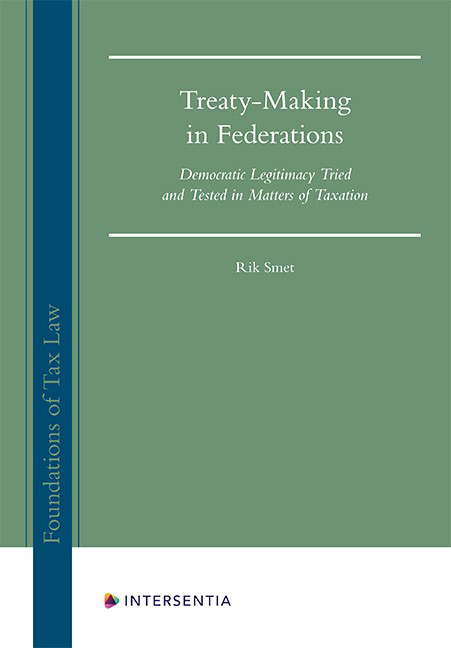Chapter 6 - Belgian Tax Treaty-Making Practice: The Proof of the Pudding
Published online by Cambridge University Press: 22 February 2022
Summary
As the proof of the pudding is in the eating, not only theory, but also practice should be taken under revision. A quick recapitulation of the general framework provided by the VCLT leads the way for an analysis of the Belgian tax treaty-making practice and how this relates to what the Cooperation Agreement requires.
DIFFERENT PHASES IN TREATY MAKING IN GENERAL
A. NEGOTIATING PHASE
Treaties are, almost by default, the final result of negotiations between representatives of the contracting states. The text of the treaty is adopted by the consent of all the states participating in its drafting. After the text is adopted, it must be authenticated. This is done by signature, signature ad referendum or initialing by the representatives of the treaty partners, unless the treaty text provides another procedure.
B. CONSENT TO BE BOUND
After authentication, the text is definitively drafted. The next step is for the treaty partners to express their consent to be bound by the treaty. Consent to be bound by the treaty can be ‘expressed by signature, exchange of instruments constituting a treaty, ratification, acceptance, approval or accession, or by any other means if so agreed’. This flexibility to express a state's consent, implies that it can e.g. be provided tacitly and show from the state's conduct. The signature will represent a state's consent to be bound by the treaty, when i) the treaty provides that it shall have that effect, ii) it is otherwise established that it should have that effect, or iii) the intention to give such effect to the signature appears from the full powers of the state's representative, or was expressed during negotiations.
Consent to be bound by a treaty is expressed by an exchange of instruments constituting a treaty, if i) those instruments provide that their exchange shall have that effect, or ii) such is otherwise established. The same is true for consent expressed by ratification, acceptance or approval, with the addition that ratification, acceptance or approval is also required if iii) the representative has signed the treaty subject to ratification, acceptance or approval, or iv) the intention of the state to sign the treaty subject to ratification, acceptance or approval appears from the full powers of its representative or was expressed during the negotiations.
- Type
- Chapter
- Information
- Treaty-Making in FederationsDemocratic Legitimacy Tried and Tested in Matters of Taxation, pp. 243 - 274Publisher: IntersentiaPrint publication year: 2021



